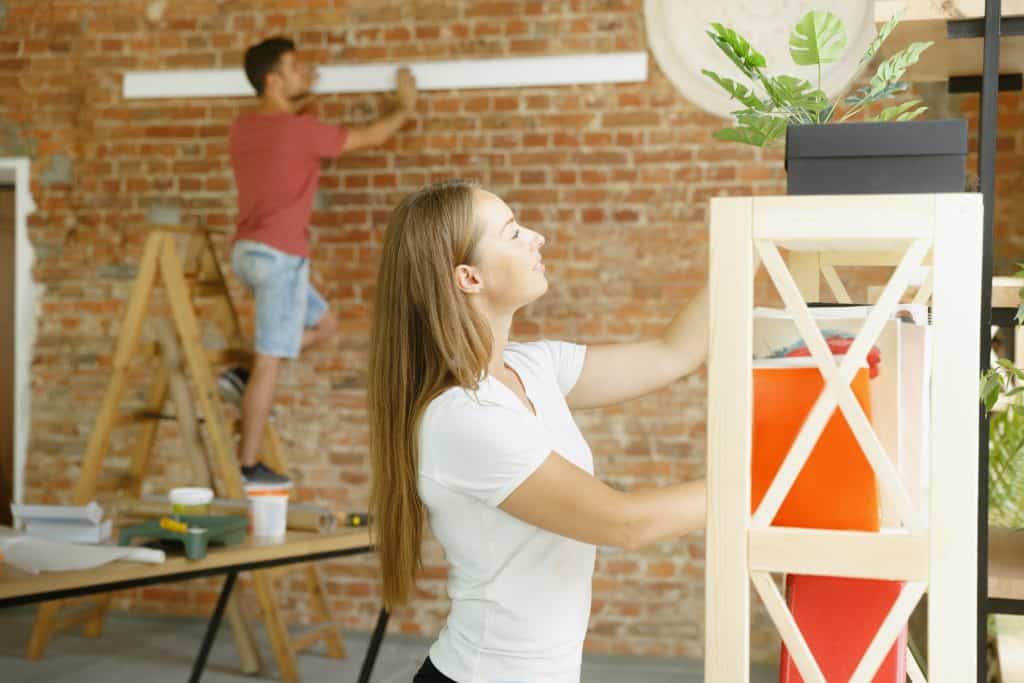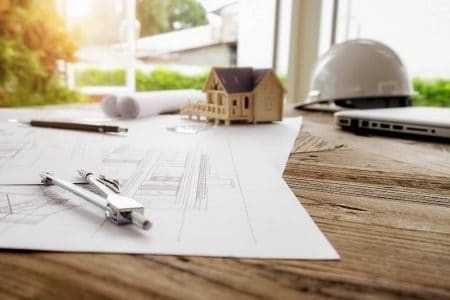
In This Article
Welcome to the world of Sustainable Renovation, where upgrading homes goes hand in hand with a green touch. In this section, we’ll dip our toes into the concept of sustainable renovation, understanding what it means and why it’s becoming increasingly popular among homeowners.
Picture this: a home that not only provides comfort and style but also contributes to a healthier planet. That’s the essence of sustainable renovation. It’s about making conscious choices throughout the renovation process that minimize the environmental impact. From the materials you choose to the energy efficiency of your appliances, every decision counts.
Understanding Sustainable Renovation
In this section, we’ll delve into the foundational principles of sustainable renovation, exploring the importance of eco-friendly materials and the integration of energy-efficient systems.
Recycled Materials: A Second Life for Resources
Sustainable renovation begins with a thoughtful consideration of the materials we bring into our homes. Enter recycled materials, the unsung heroes of eco-conscious design. From reclaimed wood to salvaged metal, these materials not only contribute to a unique aesthetic but also divert resources from landfills, embodying the essence of sustainable living.
Reclaimed Treasures: History in Your Home
Ever considered the story behind a piece of reclaimed wood or a vintage fixture? Reclaimed materials bring history and character into your living space. Whether it’s repurposing old barn wood or incorporating architectural salvage, choosing reclaimed materials is an homage to the past, making your renovation a narrative of sustainability.
Sustainably Sourced Materials: Nurturing the Future
For those starting anew, sustainably sourced materials are the key to a greener future. Opting for materials harvested or produced with environmental responsibility in mind ensures that your choices support ecosystems rather than deplete them. From bamboo to FSC-certified wood, these materials represent a commitment to the longevity of both your home and the planet.
LED Lighting: Illuminating the Future
Light up your sustainable home with LED lighting. These energy-efficient bulbs not only consume less electricity but also last longer, reducing the frequency of replacements. Say goodbye to the era of incandescent bulbs and welcome a brighter, eco-friendly illumination to your living spaces.
Smart Thermostats: Intelligence Meets Efficiency
Enter the era of intelligent climate control with smart thermostats. These devices adapt to your lifestyle, learning your habits to optimize heating and cooling. By ensuring your home is only using energy when necessary, smart thermostats contribute to both comfort and sustainability.
Solar Panels: Harvesting the Power of the Sun
Elevate your home’s energy independence with solar panels. By harnessing the power of the sun, solar panels generate clean and renewable electricity. The installation may require an initial investment, but the long-term benefits not only contribute to a sustainable lifestyle but also offer potential cost savings on your energy bills.
Benefits of Sustainable Renovation
Sustainable renovation is not just a feel-good trend; it’s a practical and rewarding approach that brings a host of benefits to homeowners. In this section, we’ll delve into the intricacies of the advantages, ranging from financial savings to increased home value, that come with adopting eco-friendly practices in your renovation endeavours.
Energy Efficiency
One of the primary benefits of sustainable renovation is the potential for significant cost savings over time. Energy-efficient systems, such as LED lighting, smart thermostats, and solar panels, play a pivotal role in reducing utility bills. LED bulbs consume less energy, have a longer lifespan, and contribute to lower electricity costs. Smart thermostats optimize heating and cooling, adapting to your habits and saving energy when you’re away. Meanwhile, solar panels harness the power of the sun, generating electricity and potentially eliminating or significantly reducing your dependence on the grid.
Reduced Maintenance Costs
Investing in high-quality, sustainable materials often translates to reduced maintenance costs. For instance, durable and weather-resistant materials may require less frequent repairs and replacements, saving you money in the long run. Sustainable choices not only contribute to a healthier environment but also contribute to the health of your wallet.
Growing Demand for Sustainable Homes
As environmental awareness continues to rise, so does the demand for sustainable living spaces. Homes with eco-friendly features are perceived as more desirable by prospective buyers. The growing interest in reducing environmental impact and living a greener lifestyle means that a sustainable renovation can significantly increase the resale value of your home.
Return on Investment (ROI)
Sustainable renovations often provide a solid return on investment. While the upfront costs may be higher compared to conventional renovations, the long-term benefits, both in terms of cost savings and increased home value, can outweigh the initial expenses. Homebuyers are increasingly willing to pay a premium for energy-efficient homes with sustainable features, making your investment in green upgrades a wise financial decision.
Government Incentives
In many regions, governments and municipalities offer incentives, rebates, or tax credits for sustainable home improvements. This can further enhance the financial benefits of your renovation project. From solar panel installations to energy-efficient appliances, these incentives provide an extra layer of motivation to embrace sustainable practices.
Practical Tips for Sustainable Renovation
Embarking on a sustainable renovation journey requires thoughtful planning and a commitment to making eco-conscious choices. In this section, we’ll provide you with practical tips to guide you through the process, ensuring that your renovation project aligns with sustainable principles from start to finish.
Assess Energy Usage
Begin your sustainable renovation by conducting a thorough green audit of your home. Evaluate your energy usage patterns, identifying areas where improvements can be made. Are there appliances consuming excessive energy? Are there opportunities to enhance insulation and reduce heating or cooling needs? Understanding your home’s current environmental impact is the first step towards making informed and effective changes.
Evaluate Water Consumption
Consider water usage in your green audit. Look for opportunities to install water-efficient fixtures, such as low-flow faucets and dual-flush toilets. Additionally, inspect for potential leaks and address them promptly. Sustainable renovation extends beyond energy considerations, encompassing responsible water usage for a holistic environmental approach.
Examine Material Choices
Assess the materials used in your home and identify those with a higher environmental impact. Are there opportunities to replace them with recycled or reclaimed alternatives? Evaluate the lifespan and durability of materials to minimize the need for frequent replacements. This critical step sets the stage for selecting sustainable materials during the renovation process.
Research Local Suppliers
When sourcing materials for your renovation, prioritize local suppliers who embrace sustainable practices. Local sourcing reduces transportation-related carbon emissions and supports the regional economy. Research suppliers that prioritize eco-friendly materials and demonstrate a commitment to reducing their environmental footprint.
Verify Sustainable Certifications
Look for materials with recognized sustainable certifications. Whether it’s FSC-certified wood, Energy Star-rated appliances, or other eco-friendly certifications, these labels indicate that the products meet specific environmental standards. Verifying certifications ensures that the materials you choose align with your sustainability goals.
Explore Reclaimed and Recycled Options
Consider incorporating reclaimed and recycled materials into your renovation. From flooring made of reclaimed wood to countertops crafted from recycled glass, these materials not only reduce demand for new resources but also add unique character to your home. Embrace creativity and eco-conscious choices simultaneously.
Prioritize Insulation Upgrades
Quality insulation is a cornerstone of sustainable renovation. Evaluate your home’s current insulation and prioritize upgrades. Proper insulation not only enhances energy efficiency but also contributes to a more comfortable living environment. Explore eco-friendly insulation materials, such as recycled denim or sheep’s wool, to align with sustainable principles.
Seal Gaps and Leaks
Addressing gaps and leaks in your home is an effective way to improve insulation. Conduct a thorough inspection, sealing any openings that allow air infiltration. This not only enhances energy efficiency but also prevents drafts, ensuring a more stable indoor climate.
Consider Natural Insulation Alternatives
Explore natural insulation alternatives, such as cork or cellulose, which have minimal environmental impact compared to traditional insulation materials. These options provide effective insulation while aligning with the principles of sustainability.
Conclusion
In the world of home improvement, sustainable renovation isn’t just a trend – it’s a responsibility. By upgrading our homes with a green touch, we not only create spaces that are comfortable and stylish but also contribute to the well-being of our planet. From choosing eco-friendly materials to investing in energy-efficient systems, the path to sustainability is diverse and accessible.
So, as you embark on your sustainable renovation journey, remember that the choices you make today echo into the future. Your home is not just a reflection of your style; it’s a statement of your commitment to a greener, more sustainable world.



